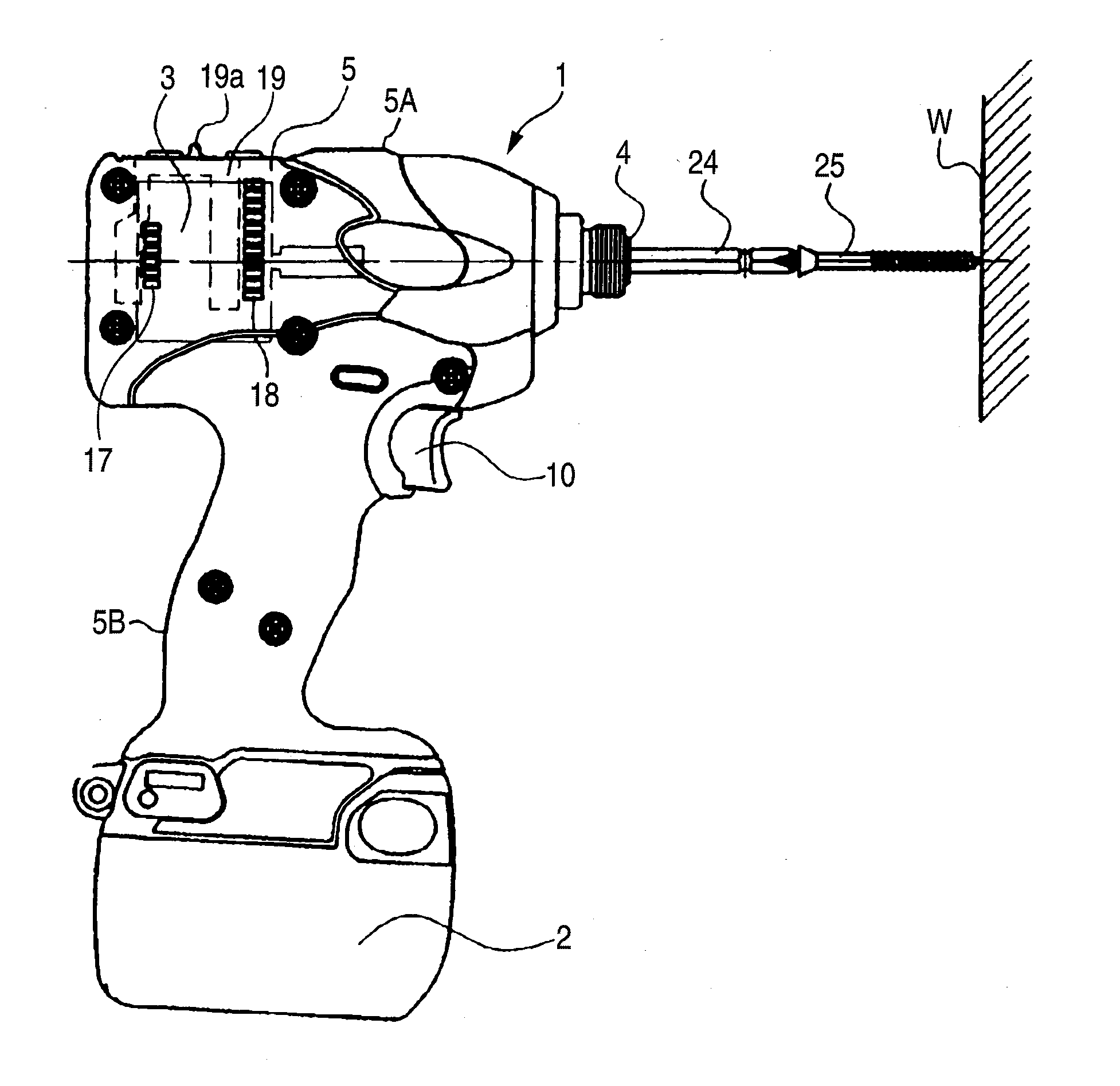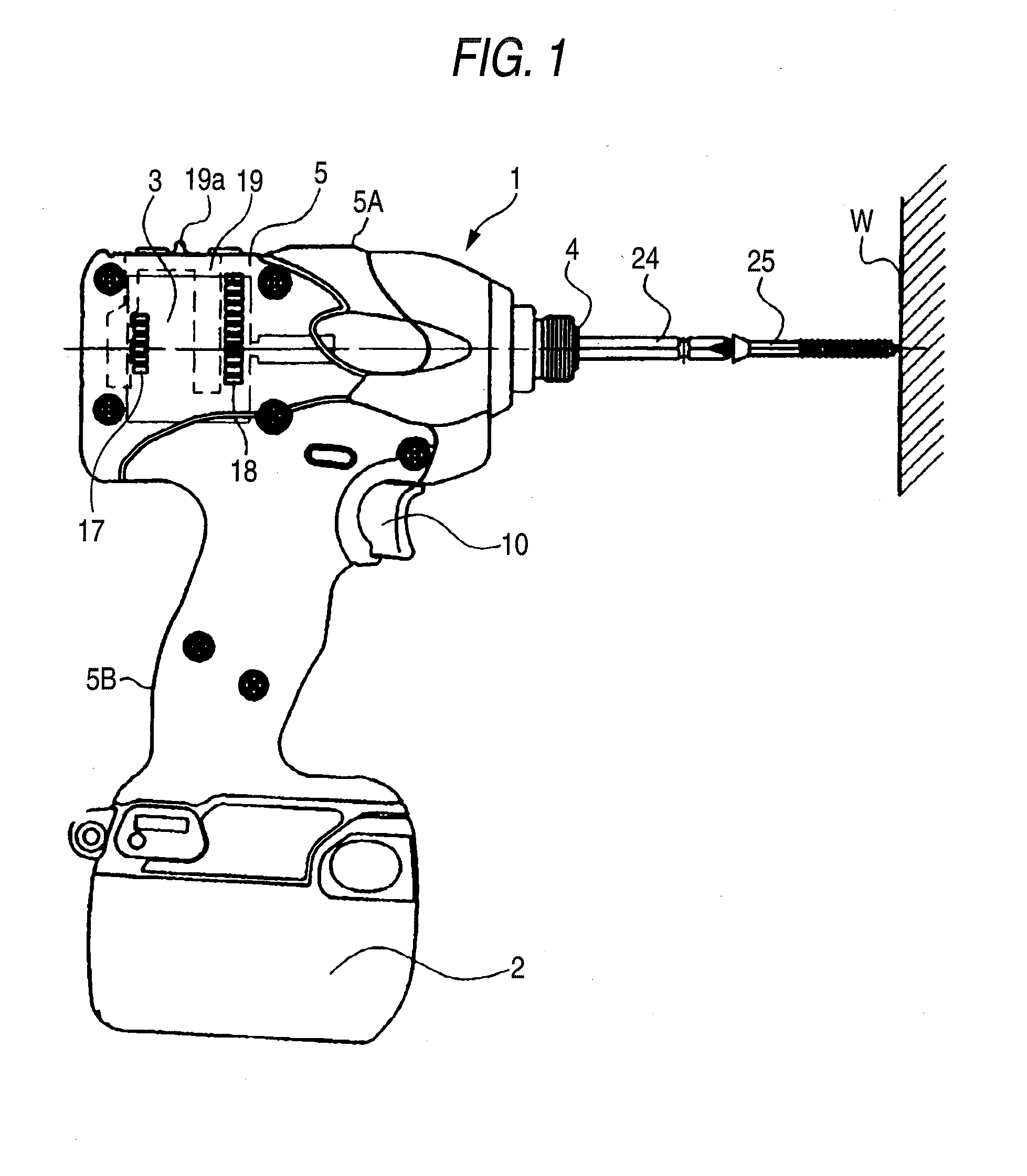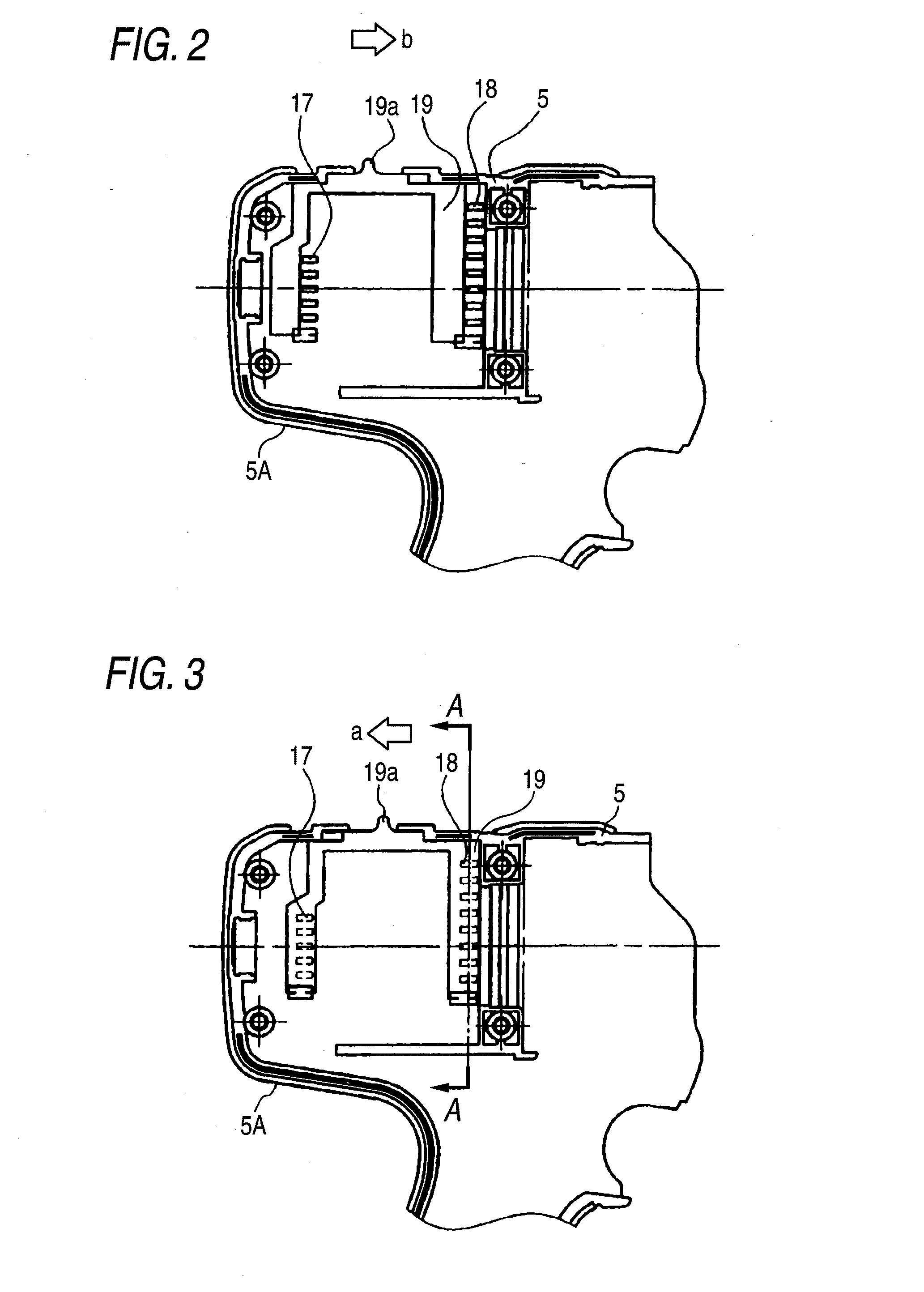Electric tool
a technology of electric tools and electric motors, applied in the field of electric tools, can solve the problems of inability to solve the problem of easy to occur, and the inability to inhibit the intrusion of extraneous matter into the housing, so as to achieve efficient cooling prevent the increase in the temperature of the electric motor, and detect the effect of the problem easily
- Summary
- Abstract
- Description
- Claims
- Application Information
AI Technical Summary
Benefits of technology
Problems solved by technology
Method used
Image
Examples
first embodiment
[0044]FIG. 1 is a side view of an impact driver that is an embodiment (first embodiment) of an electric tool; FIG. 2 is fragmentary internal drawing of a housing achieved when air inlets and air outlets of the impact driver are opened; FIG. 3 is a fragmentary internal drawing of the housing achieved when the air inlets and the air outlets of the impact driver are closed; and FIG. 4 is a cross-sectional view taken along line A-A shown in FIG. 3.
[0045]The impact driver 1 shown in FIG. 1 has a housing 5 that assumes the shape of the letter T when viewed sideways and that is formed from a resin. An electric motor 3 serving as a drive source is housed in a sideways position within a body 5A of the housing 5. A battery 2 is removably attached to a lower end of a handle 5B extending downwardly, in an integrated fashion, from the body 5A of the housing 5. A switch 10 that toggles on or off a power supply from the battery 2 to the electric motor 3, to thus activate / deactivate the electric mo...
second embodiment
[0053]A second embodiment will be described by reference to FIGS. 5 through 7.
[0054]FIG. 5 is a fragmentary internal view of a housing of an impact driver according to a second embodiment; and FIGS. 6 and 7 are cross-sectional views taken along line B-B shown in FIG. 5, wherein FIG. 6 shows a state where both the air inlets and the air outlets are opened and FIG. 7 shows a state that both the air inlets and the air outlets are closed.
[0055]The present embodiment is characterized in that a cover 21 is rotated in a circumferential direction along the inside of the housing 5, thereby simultaneously opening and closing the air inlets 17 and the air outlets 18. Air vents 21b (only air vents in mutual communication with the air outlets 18 are shown in FIGS. 6 and 7) that are selectively brought into mutual communication with the air inlets 17 and the air outlets 18 formed in the housing 5 are provided in the cover 21. A lever 21a for rotationally operating the cover 21 is formed integrall...
third embodiment
[0060]A third embodiment will be described by reference to FIGS. 8 and 9.
[0061]FIGS. 8 and 9 are fragmentary side views of an impact driver according to a third embodiment, wherein FIG. 8 shows a state where both the air inlets and the air outlets are opened and FIG. 9 shows a state that both the air inlets and the air outlets are closed.
[0062]The present embodiment is characterized in that a cover 22 is slid in a longitudinal direction along the outside of the housing 5, thereby simultaneously opening and closing the air inlets 17 and the air outlets 18. Rectangular air vents 22b (only one of the air vents is shown in FIGS. 8 and 9) that are selectively brought into mutual communication with the air inlets 17 formed in the housing 5 are provided at both ends of the cover 22. A lever 22a for sliding the cover 22 is formed integrally in a part of an upper surface of the cover 22.
[0063]In the present embodiment, in a working environment with much extraneous matter, such as dust or met...
PUM
 Login to View More
Login to View More Abstract
Description
Claims
Application Information
 Login to View More
Login to View More - R&D
- Intellectual Property
- Life Sciences
- Materials
- Tech Scout
- Unparalleled Data Quality
- Higher Quality Content
- 60% Fewer Hallucinations
Browse by: Latest US Patents, China's latest patents, Technical Efficacy Thesaurus, Application Domain, Technology Topic, Popular Technical Reports.
© 2025 PatSnap. All rights reserved.Legal|Privacy policy|Modern Slavery Act Transparency Statement|Sitemap|About US| Contact US: help@patsnap.com



